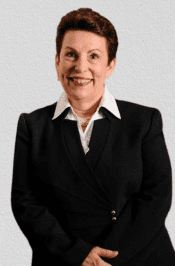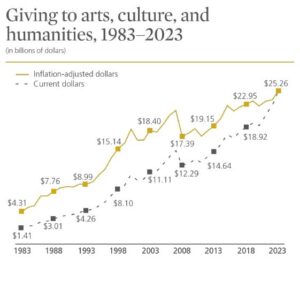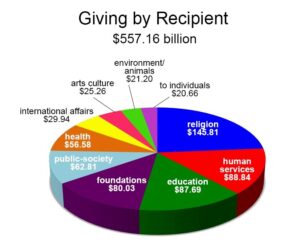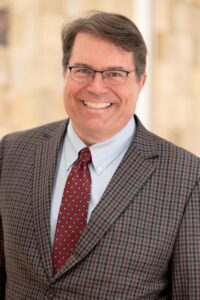

From the Desk of
Jane DiFolco Parker ¦ Partner
Board or Bored: The Consequential Role of Nonprofit Boards
According to USAFacts,* there were 1.97M non-profit organizations operating in the U.S. in 2022. Of those, 1.48M were 501(c)(3) tax-exempt organizations, according to the IRS. Chances are pretty good that most, if not all of those 1.48M organizations have a board responsible for providing governance, strategic direction, and oversight. Board sizes vary dramatically; but for the sake of argument, let’s assume the average board size is 15. (Note that, according to BoardSource, in 2007, the median board size, excluding those for churches, was 15). That means that, collectively, there are more than 22M non-profit board members in this country.
Board members are a tremendous source of expertise, financial support, and contacts. They help to ensure that organizations adhere to their missions, and that they remain accountable to their stakeholders, including the communities they service, their donors, and their beneficiaries. Their collective wisdom helps to steer the organization toward achieving its goals, while maintaining financial stability and legal compliance. Volunteer boards (we hope!) contribute to fundraising efforts and resource mobilization and play an active role in cultivating relationships with donors and other supporters, advocating for the organization’s cause, and leveraging their networks to secure funding. In the not-for-profit space, funding is the lifeblood that fuels an organization’s ability to fulfill its mission.
As is true in many sectors, non-profit boards face numerous challenges today. The complexities associated with governance are increasingly difficult in a highly regulated environment. Thus, they must remain informed about legal obligations, financial reporting standards and best practices in governance to mitigate risk and maintain public trust. They must respond to demands for increased transparency and accountability that result from intense public scrutiny and regulatory requirements. And, boards must ensure they include diversity of skills, perspectives, and demographics crucial to effective decision-making and representation of the community their organization serves.
Boards can and should be champions for their organizations, notwithstanding the increased complexities associated with serving, standing with them in times of crisis. It was much easier to effectively fulfill the responsibilities of being a board member when the work of non-profits, especially institutions of higher learning, faced less onerous regulation, and when their work was less politicized. Nevertheless, these roles have seldom been more crucial to the overall health, viability, and positive impact of so many not-for-profit organizations.
What does all of this have to do with our work in philanthropy? Part of our responsibility is to make sure our board members are well-equipped to do their work on behalf of our organizations. Through effective orientation of new board members, ongoing training regarding good governance practices, and clear and transparent reporting and communication, we can keep our board members inspired and motivated to do their consequential work on behalf of our organizations.
The demand for philanthropic support continues to increase, and those of us in the fundraising profession face those demands daily. However, when done well, the investment of our time, effort, and energy in supporting, cultivating, and engaging our board members will generate real return on investment.
*USAFacts is a not-for-profit, nonpartisan civic initiative that strives to make government data easy for all Americans to access and understand.
Giving to the Arts in 2023
 Giving to the arts, culture, and humanities subsector amounted to 4% of total giving in 2023.
Giving to the arts, culture, and humanities subsector amounted to 4% of total giving in 2023.- Contributions increased by 11.0% from 2022 to $25.26 billion in 2023 in current dollars. Adjusted for inflation, giving grew by 6.6%, its highest value when adjusted for inflation.
- In current dollars, giving grew 9.0% between 2021 and 2022. Cumulatively, current-dollar giving to arts, culture, and humanities increased 21.0% between 2021 and 2023.
- Adjusted for inflation, giving stayed relatively flat, growing by 0.9% between 2021 and 2022, and increased by 6.6% between 2022 and 2023. Cumulatively, giving to arts, culture, and humanities grew 7.6% in inflation-adjusted dollars between 2021 and 2023.
- According to the Benchmarks 2024 report by M+R, online revenue for cultural organizations grew by 3% in 2023.

- Religious organizations received the largest share of charitable dollars in 2023, at 24% of total giving. In current dollars, giving to religion increased by 3.1% between 2022 and 2023. Adjusted for inflation giving declined by 1.0% between 2022 and 2023.
- Human services organizations comprised the second-largest portion of total gifts received, at 14% of the total in 2023. In current dollars, giving to this sector increased by 5.8% between 2022 and 2023. Adjusted for inflation, giving increased by 1.7%.
- Comprising the ninth-largest share of charitable dollars in 2023, the environment/animals subsector received 3% of total gifts. Adjusted for inflation, giving to this sector grew by 3.9% between 2022 and 2023 and in current dollars, increased by 8.2%.
- The international affairs subsector ranked seventh in total gifts received, amounting to 5% of charitable dollars in 2023. Giving to this sector declined by 1.6% in inflation-adjusted dollars and grew by 2.5% in current dollars.
- Comprising the sixth-largest portion of charitable dollars in 2023, the health subsector received 9% of total giving. Adjusted for inflation, giving to this sector grew by 4.4% between 2022 and 2023 and in current dollars grew by 8.7%.
- The public-society benefit subsector ranked fifth in total gifts received at 10% of charitable dollars in 2023. In current dollars giving to this sector increased by 11.6% between 2022 and 2033, and in inflation-adjusted increased by 7.2%.
- Gifts to grantmaking foundations comprised the fourth-largest share of charitable dollars in 2023, amounting to 13% of total giving. Between 2022 and 2023, inflation-adjusted giving to foundations grew 10.8%, and in current dollars, it increased 15.4%.
- The education subsector ranked third in total gifts received, at 14% of charitable dollars in 2023. Between 2022 and 2023, inflation-adjusted giving to education increased by 6.7%, and in current dollars, it increased by 11.1%.
Telfair Name New Director
Telfair Museums (formally known as Telfair Museum of Art) in Savannah, Ga, named David Brenneman Executive Director and CEO. Telfair is an Alumni Client Partner. Formerly the Director of The Sidney and Lois Eskenazi Museum of Art at Indiana University, Brenneman supervised the transformational $30 million renovation of the museum’s signature I. M. Pei building. Prior to that he spent 20 years in various curatorial leadership positions at the High Museum of Art, serving as the Director of Collections and Exhibitions at the time of his departure in 2015. The High is also an Alumni Client Partner.
Formerly the Director of The Sidney and Lois Eskenazi Museum of Art at Indiana University, Brenneman supervised the transformational $30 million renovation of the museum’s signature I. M. Pei building. Prior to that he spent 20 years in various curatorial leadership positions at the High Museum of Art, serving as the Director of Collections and Exhibitions at the time of his departure in 2015. The High is also an Alumni Client Partner.
“I am deeply honored and excited to lead Telfair Museums, Georgia’s oldest art museum, into its next chapter. The museums’ rich history, dedication to artistic excellence, and community impact present a remarkable opportunity. I look forward to collaborating with the staff, board, patrons, and the Savannah community to further enhance Telfair’s reputation as a cornerstone of cultural life in Georgia,” said Brenneman. Connectsavannah.com
We Know Museums
For more than 35 years, Alexander Haas has been a fixture in the nonprofit community. We are honored to have worked with leading museums and cultural organizations across the country that help communities be a better place to live. Just ask our clients.
Face It: Museums are Different
Our services aren’t cookie cutter. We don’t operate with a boilerplate, merely changing names and locations. We craft each and every service we provide to match your museum’s unique needs, wants and abilities. We work hard and expect you to do the same. Together we can help you transform your museum, your fundraising, and the community you serve.
Whether your need is in Capital Campaign, Annual Fund Campaign, Major Gifts, Leadership Annual Giving, Planned Giving or all of the above, we take a fresh approach to nonprofit fundraising.


